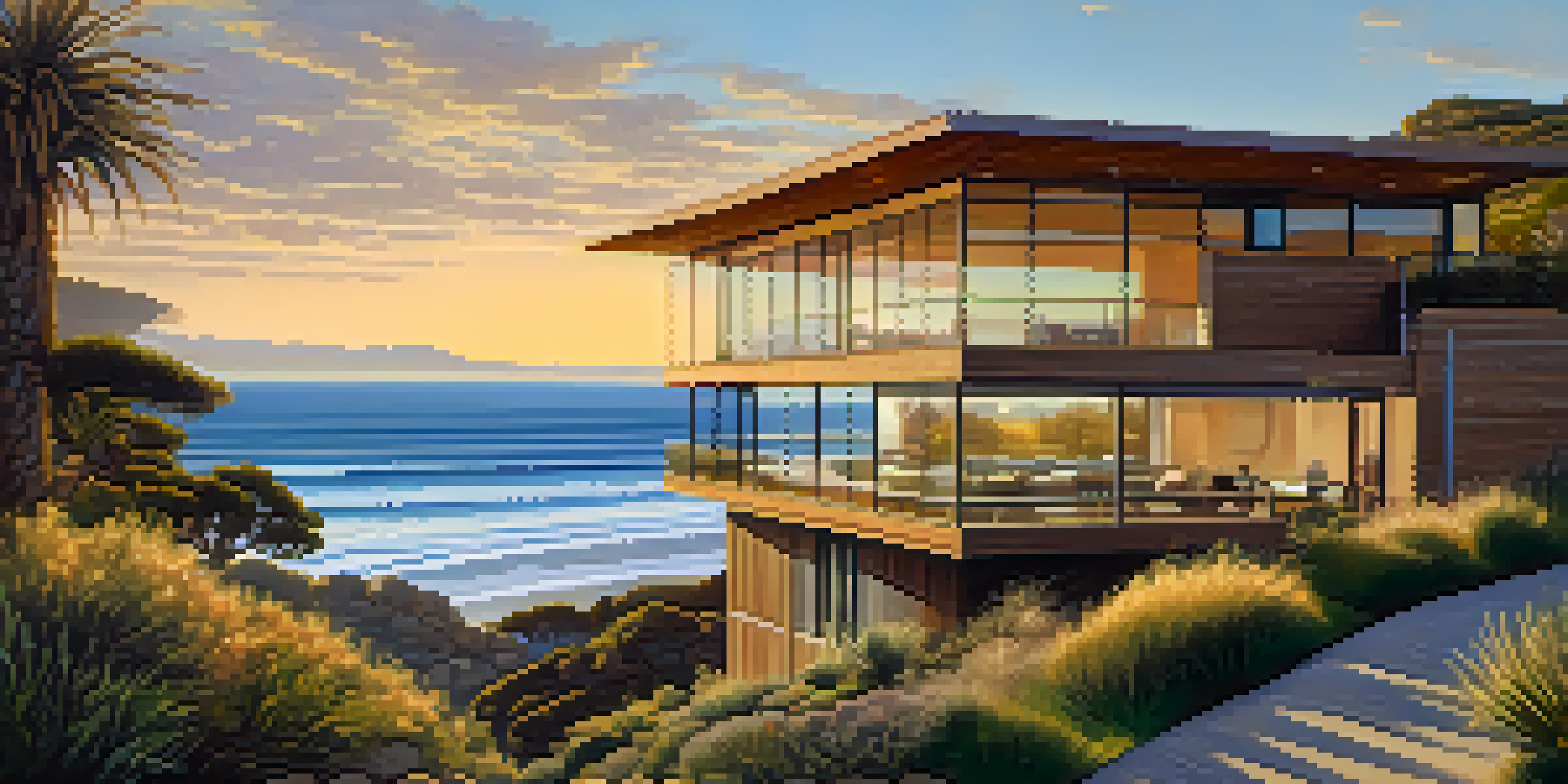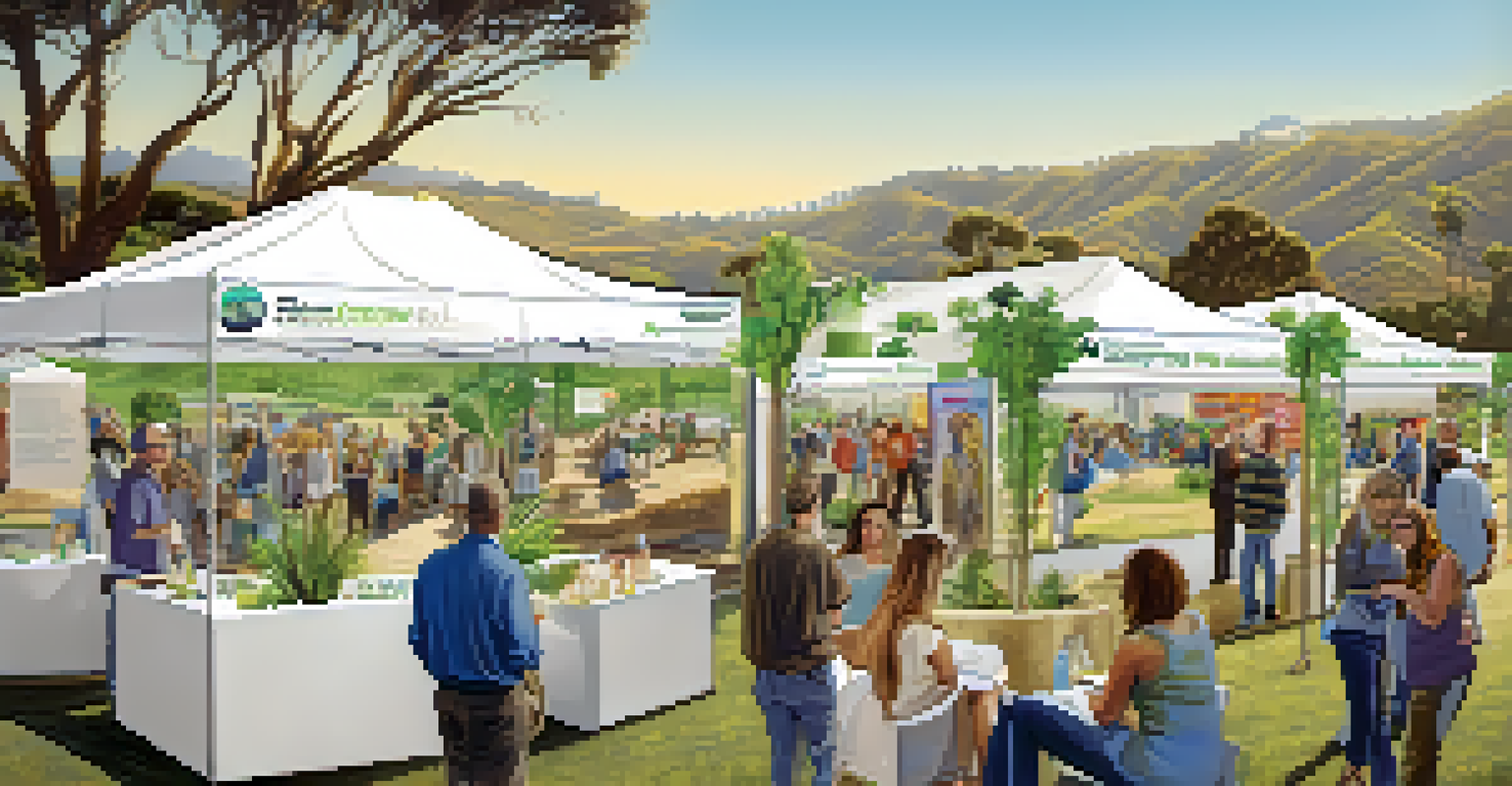Understanding LEED Certification in Malibu's Eco-Conscious Builds

What is LEED Certification and Why It Matters
LEED, or Leadership in Energy and Environmental Design, is a globally recognized certification system that promotes sustainable building practices. Developed by the U.S. Green Building Council, it sets standards for environmentally friendly construction. In Malibu, where natural beauty meets luxury living, LEED certification plays a vital role in ensuring that new developments respect the environment.
Sustainability is no longer about doing less harm. It's about doing more good.
The certification process is a way for builders and developers to showcase their commitment to sustainability. By meeting specific criteria, projects can earn points across various categories like energy efficiency, water usage, and materials selection. This not only helps the environment but also attracts eco-conscious homeowners and investors who value green living.
In Malibu, where the coastline and wildlife are significant draws, LEED-certified buildings contribute to preserving local ecosystems. They help mitigate climate change by reducing carbon footprints and ensuring responsible resource management. This makes understanding LEED certification essential for anyone involved in construction or real estate in the area.
The Categories of LEED Certification Explained
LEED certification is divided into several categories, each focusing on different aspects of sustainability. These categories include Sustainable Sites, Water Efficiency, Energy and Atmosphere, Materials and Resources, Indoor Environmental Quality, and Innovation in Design. Each category offers opportunities for builders to earn points towards their certification.

For instance, Sustainable Sites encourages the use of previously developed land and emphasizes the importance of minimizing site disturbance. Water Efficiency focuses on reducing water usage, which is particularly relevant in California’s drought-prone environment. By understanding these categories, builders can better strategize their projects to maximize their LEED points.
LEED Certification Promotes Sustainability
LEED certification encourages builders to adopt eco-friendly practices that benefit both the environment and property value.
Moreover, each category has specific prerequisites that must be met to qualify for certification. This structured approach not only promotes rigorous standards but also fosters a comprehensive understanding of sustainability in construction. As such, builders in Malibu can leverage these categories to align their projects with eco-conscious ideals.
Benefits of LEED Certification for Builders
Obtaining LEED certification offers numerous benefits for builders and developers. Firstly, it enhances the marketability of properties, as many buyers today prefer sustainable homes. A LEED-certified building stands out in a crowded market, often commanding higher prices and quicker sales due to its eco-friendly features.
The greatest threat to our planet is the belief that someone else will save it.
Additionally, these buildings tend to have lower operating costs due to energy-efficient systems and water-saving fixtures. This not only benefits the environment but also leads to substantial savings for homeowners over time. Furthermore, LEED certification can provide access to incentives such as tax breaks and grants, making it financially appealing for builders.
Moreover, being LEED certified helps builders establish a strong reputation in the industry. As consumers and investors increasingly prioritize sustainability, having a LEED certification can position a builder as a leader in eco-friendly construction. In Malibu, where lifestyle and environmental consciousness go hand-in-hand, this reputation is invaluable.
The Process of Achieving LEED Certification
Achieving LEED certification involves a detailed and structured process that begins with project registration. Once registered, builders must gather documentation to demonstrate compliance with LEED standards across various categories. This process includes submitting plans, specifications, and supporting materials that show how the project meets the certification requirements.
After submission, a third-party reviewer evaluates the project to ensure it meets all necessary criteria. This may involve site visits and consultations to assess compliance with energy and water efficiency standards. The review process can be intricate, but it ensures that only buildings genuinely committed to sustainability receive certification.
Malibu Supports Green Building Initiatives
Malibu's commitment to sustainable development drives community support for LEED certification, ensuring growth respects the local ecosystem.
Once the review is complete and all points are verified, the project receives its LEED certification. This certification can be a powerful marketing tool, showcasing a commitment to sustainable practices. In Malibu, with its focus on eco-conscious living, the process of achieving LEED certification is both a challenge and an opportunity for builders.
Malibu's Commitment to Sustainable Development
Malibu has taken significant steps towards sustainable development, reflecting its commitment to preserving the natural environment. Local regulations often encourage the adoption of green building practices, including LEED certification, to minimize the impact of new developments. This proactive approach ensures that growth does not come at the expense of the stunning landscapes and ecosystems that define the area.
Community support for sustainable initiatives is strong, with many residents advocating for eco-friendly practices. This creates an environment where builders are motivated to pursue LEED certification, knowing that the community values sustainability. In this way, Malibu serves as a model for how local governments and citizens can work together towards eco-conscious goals.
Additionally, Malibu's unique geographical challenges, such as wildfires and water scarcity, have made sustainability a priority in urban planning. By integrating LEED-certified buildings into the community, Malibu aims to create resilient structures that can withstand these challenges while promoting a healthier environment. This commitment to sustainability is a win-win for the community and the planet.
Challenges in Achieving LEED Certification
While the benefits of LEED certification are clear, the journey to achieving it can come with challenges. One of the most significant hurdles is the cost associated with sustainable materials and technologies. Many builders may find that the upfront investment in energy-efficient systems and eco-friendly materials can be prohibitive, especially for smaller projects.
In addition, the LEED certification process can be complex and time-consuming. Builders must navigate through numerous requirements and documentation, which can lead to delays in project timelines. This complexity can deter some builders from pursuing certification, despite the long-term benefits.
Challenges in LEED Certification Process
Builders face hurdles such as high costs and complex requirements when pursuing LEED certification, which can deter sustainable practices.
Moreover, there may be a lack of awareness or understanding of LEED certification among some builders and developers. This knowledge gap can lead to missed opportunities for sustainable building practices. Educational resources and support can help bridge this gap, making it easier for builders to embrace LEED certification and all its advantages.
The Future of LEED Certification in Malibu
The future of LEED certification in Malibu looks promising, with increasing awareness of sustainability among builders and the community. As more projects emerge that prioritize eco-friendly practices, LEED certification will likely become a standard expectation rather than a novelty. This shift reflects a growing trend toward sustainable living that is gaining momentum across the country.
Technological advancements in green building practices are also paving the way for easier compliance with LEED standards. Innovations in energy efficiency, waste reduction, and sustainable materials are making it more feasible for builders to achieve certification. As these technologies become more accessible, we can expect to see a rise in the number of LEED-certified buildings in Malibu.

In conclusion, as Malibu continues to prioritize environmental preservation and community well-being, LEED certification will play a critical role in shaping the future of its construction landscape. By embracing sustainable practices, the city can ensure that its natural beauty remains intact for generations to come, making it a model for eco-conscious development.